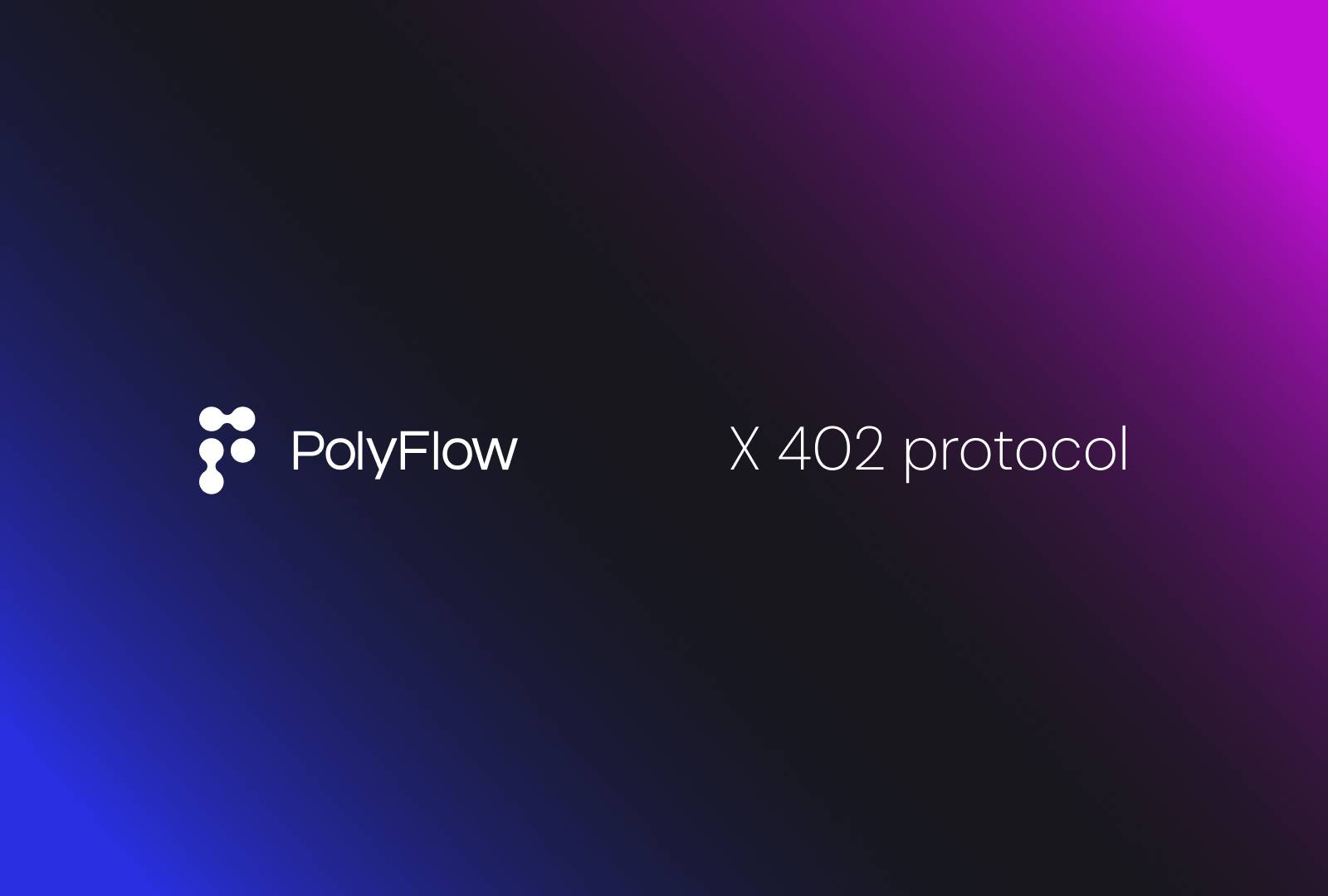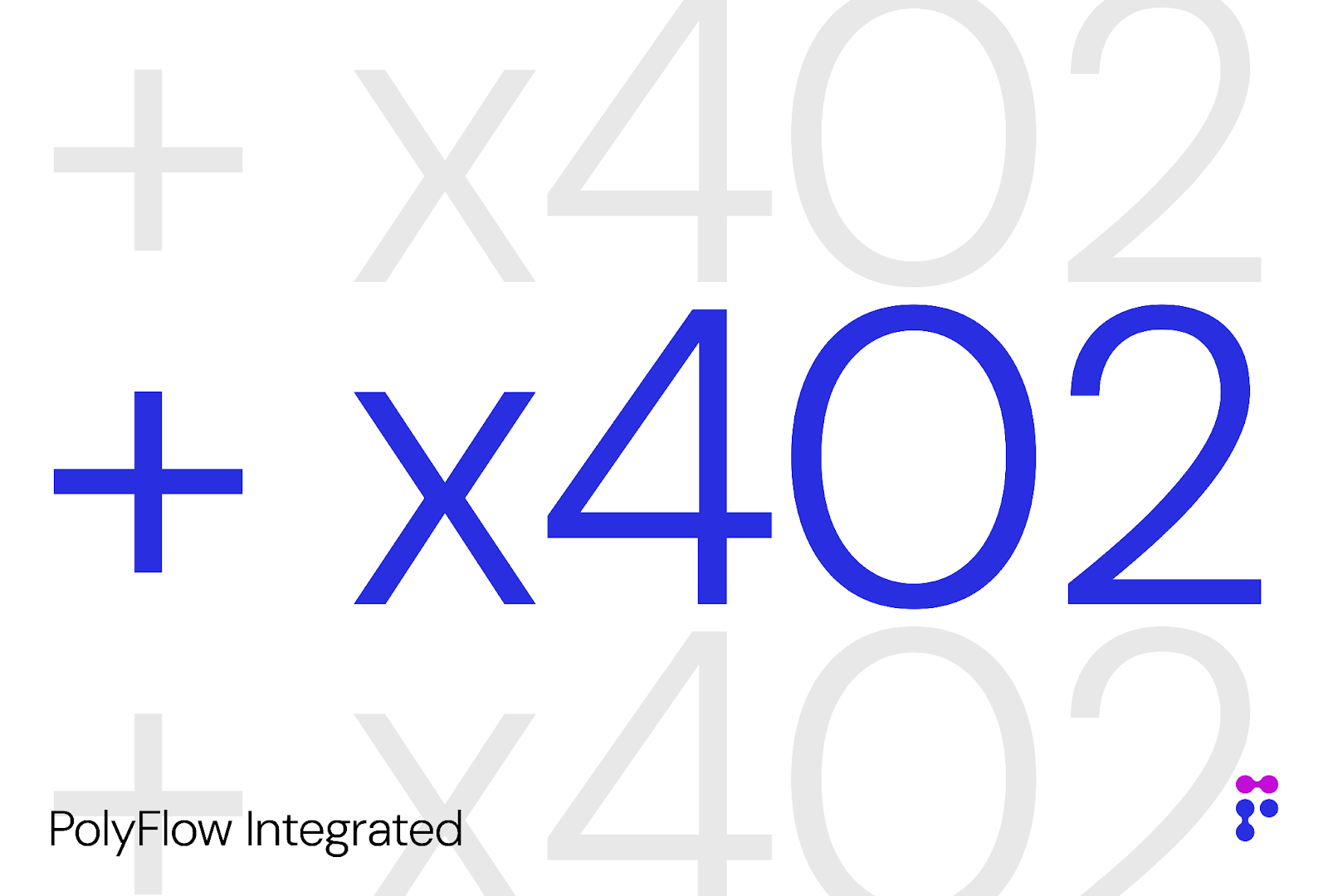x402 has opened the channel, and PolyFlow extends this channel into the real business and AI Agent world.
In the context of the accelerating iteration of the digital economy and the quiet arrival of the AI Agent era, payment infrastructure must also leap from a "human → human" model to a "machine → machine / human → machine" model. The PayFi innovation protocol PolyFlow, with its deep cultivation in the PayFi field and its deep integration with the x402 protocol, is building a truly "AI-native payment network," allowing "value to be transmitted like data" to move from conceptualization to a commercially viable and scalable reality.
Technical Underpinnings: The New Mission of HTTP402
x402, led by Coinbase, is based on the HTTP "402 Payment Required" status code, aiming to embed stablecoin payments directly into the HTTP request/response process. When a client requests a resource that requires payment, the server returns a 402 status along with payment information; after the client completes the payment, they can access the content—thus completely dissolving the boundary between payment and access. Its core advantages include: chain agnostic, low latency, and standard neutrality; no need for traditional account systems and API keys; support for AI Agents and IoT devices to make autonomous payments; micro-payments, event-triggered payments, and machine-to-machine settlements are all achievable.
As AI Agents gain autonomous trading, API calling, and service capabilities, payment systems must meet three major conditions: real-time, low latency, and support for micro-payments; programmable and logically triggered; settleable, traceable, and compliant.
The traditional banking system struggles to adapt, while PolyFlow × x402 perfectly fills this gap. Through the PayFi module and Pelago Connect, developers can easily embed stablecoin settlement and automated payments into scenarios such as SaaS, supply chains, cross-border e-commerce, and data services.
For example:
In Shopify e-commerce, AI Agents automatically place orders using USDC;
In manufacturing supply chains, the on-chain bill of lading triggers fund settlement;
In AI service calls, Agents pay per API call with real-time settlement.

Building a "Machine-Native Payment Network": The Integration of PolyFlow × x402
By integrating the x402 protocol jointly launched by Coinbase and Cloudflare, PolyFlow allows blockchain stablecoin payments to be directly embedded into the internet communication layer, achieving a true "value is data" transmission model. This integration makes PolyFlow not just a payment bridge for Web3, but a key node connecting the blockchain world and the internet protocol layer.
With the rise of the AI Agent economy, PolyFlow's PayFi and Pelago Connect gateways are becoming the payment infrastructure for the Agent economy.
Pelago Connect, through the PID (Payment Identity) and PLP (Liquidity Protocol) modules, enables AI Agents to have identity recognition (KYA), autonomous fund management, and risk compliance capabilities—essentially a machine's autonomous wallet. This means that when AI Agents become a new type of "digital customer," PolyFlow serves as the financial hub behind them.
Transitioning from "Payment Capability" to "Revenue Stream"
PolyFlow provides modular, compliant, and self-managing payment infrastructure in the PayFi field. x402 is responsible for "value routing," while PolyFlow handles "value management"—the former is embedded in the communication layer, and the latter coordinates multi-chain, multi-currency, compliance, risk control, refunds, and revenue sharing. The combination forms a complete "value transfer stack," achieving a transformation from payment capability to sustainable revenue streams.
Compliance, Identity, and Machine Trust
In the AI Agent economy, identity and compliance become new challenges. Agents cannot apply traditional KYC, while PolyFlow establishes "compliant identities" for machines through the PID/KYA (Know Your Agent) system. Combined with the self-custody module, it enables autonomous fund management, audit tracking, and risk isolation, filling the gap left by the banking system in M2M payments.
Bringing Stablecoins Back to the Real Economy: From Farms to Manufacturing
PolyFlow has achieved stablecoin settlements in areas such as Latin American agricultural products, Asian manufacturing, and Shopify cross-border e-commerce, making crypto payments no longer just a concept or investment level, but returning to real value creation. This also marks that stablecoins are no longer just DeFi tools but have become a new driving force for global capital circulation.
The x402 protocol opens the channel for internet-native payments, while PolyFlow makes this channel truly land in business and AI Agent scenarios, completing the leap from protocol to productivity. The combination forms a new paradigm of "communication equals payment": browsing, calling, and triggering lead to settlement.
When value flows like data
As the internet transitions from "information flow" to "value flow," the real breakthrough lies not in "whether transfers can occur," but in "whether value can be transmitted like data."
x402 has opened the channel, and PolyFlow extends this channel into the real business and AI Agent world. In the new generation of AI-driven economy, PolyFlow and x402 are not just a technical integration but an infrastructure-level evolution.

免责声明:本文章仅代表作者个人观点,不代表本平台的立场和观点。本文章仅供信息分享,不构成对任何人的任何投资建议。用户与作者之间的任何争议,与本平台无关。如网页中刊载的文章或图片涉及侵权,请提供相关的权利证明和身份证明发送邮件到support@aicoin.com,本平台相关工作人员将会进行核查。




